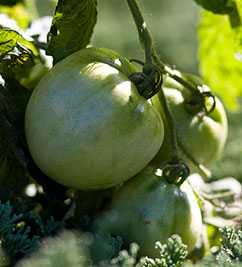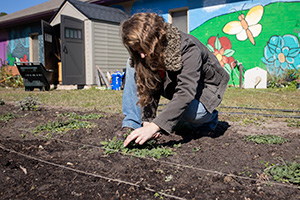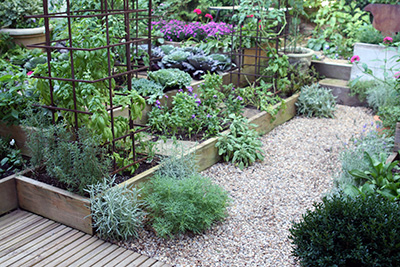Designing Your Vegetable Garden
Before planting, prepare a plan of the garden on paper. The plan should show the location of each crop and the amount to be planted on each date. It can also indicate what companion crops will be planted together.
Planting and Harvesting Considerations

To get the most out of your garden, follow these simple guidelines. You’ll make it easier on yourself, and your plants are more likely to thrive.
- Plants need a certain amount of room to thrive. Careful planning will give them the best chance to succeed.
- Plant long-season crops together and short-season crops together. This makes maintenance and harvesting easier.
- Interplant quick-growing crops like radishes among slower-growing ones like squash. Then you can harvest the radishes before the squash needs the space.
- Don’t plant too much of any vegetable at any time. Gardens often yield more than you think they will! Seed packets indicate how many seeds you may want to plant. Check out the UF/IFAS Planting Guides for more information.
- Many vegetables, like radishes, can be seeded at intervals of ten to fourteen days to ensure a constant stream of fresh produce. This is called succession planting.
- Rotate crops each season to prevent disease from taking hold. Try not to grow the same vegetable in the same location more than once every three years.
- Companion planting is a popular practice of planting one kind of vegetable close to another kind for a specific purpose. Research shows that it’s effective for saving space and improving pollination.
- Make sure to use plant labels to remind you where you placed which plants.
Arranging Plants
If space is not an issue, use these tips when planting your garden.

- To maximize sunlight, plant tall varieties along the north side of the garden, medium-high varieties in the middle, and low-growing varieties on the south side.
- Allow enough space between rows for you to work.
- Crops that span more than one season, such as asparagus and strawberries, should be placed to one side of the garden so they aren’t in the way when you prepare for the next gardening season.
- Group herbs together, as many are perennial and require similar care.
- Plant sweet corn in blocks rather than in single rows so that each ear gets enough pollen.
Small Spaces
Prospective gardeners who don’t have large yards or who want to garden in smaller or confined spaces have plenty of options.

- Wide-row technique/intensive gardening: Make beds four feet wide and transverse them with mini-rows of vegetables. You’ll be able to cram a lot of vegetables into the tight space.
- The square-foot approach: Divide your garden into 1-foot squares, then plant within each square. It’ll maximize production in a limited area.
- Foodscaping: Intentional landscaping by adding edibles to your existing framework of ornamentals. The result is stunning beds that also feed your family. This practice is the perfect marriage of form and function. See our article on Foodscaping: Creating an Edible Landscape.
- Container gardening: Plant your vegetables in clay pots, plastic containers, a bathtub—in short, anything that will hold them—and place them on your patio, along a fence, or next to the driveway. For more information about container gardening, see our article, Container Gardening.
- Hydroponics: You can grow certain plants without soil. The alternative media can be water, sand and gravel, or wood shavings, among others. See our article, Hydroponic Vegetable Gardening.
- Look up: To save space, you can trellis vining crops like cucumber or upright crops like okra.
